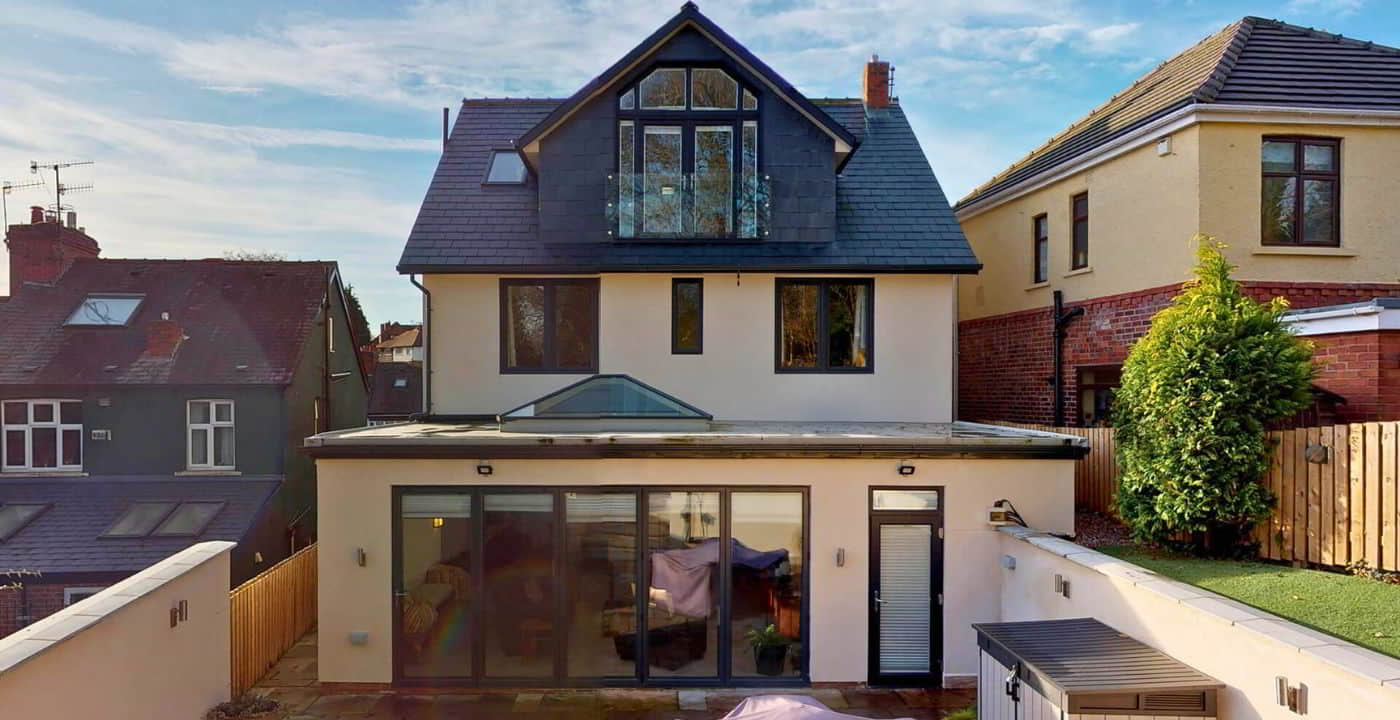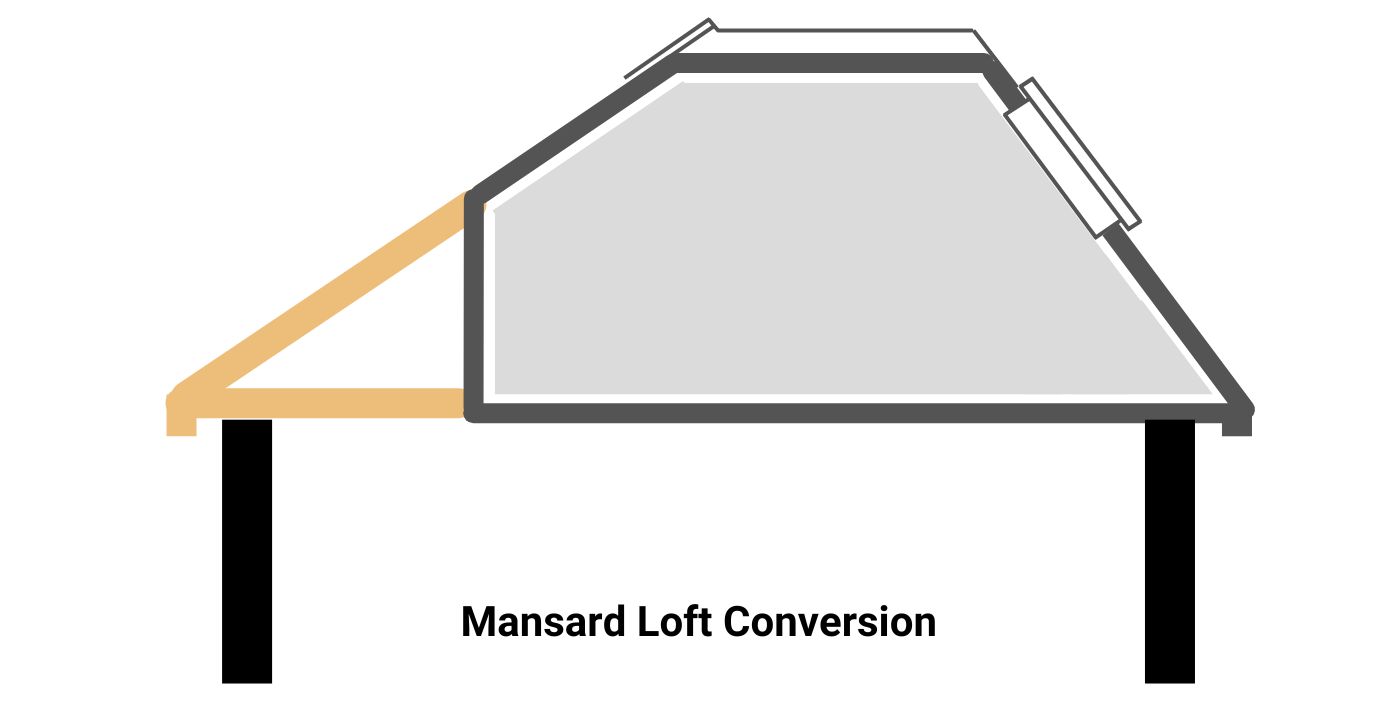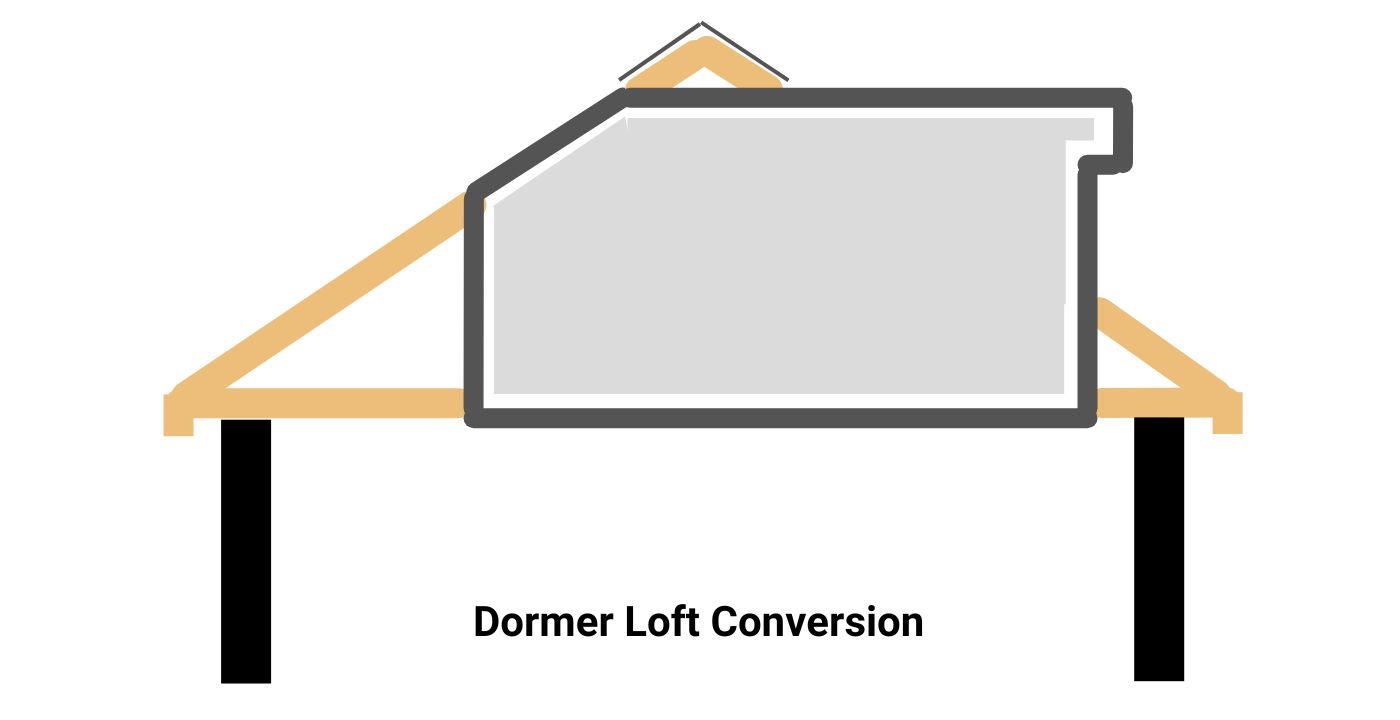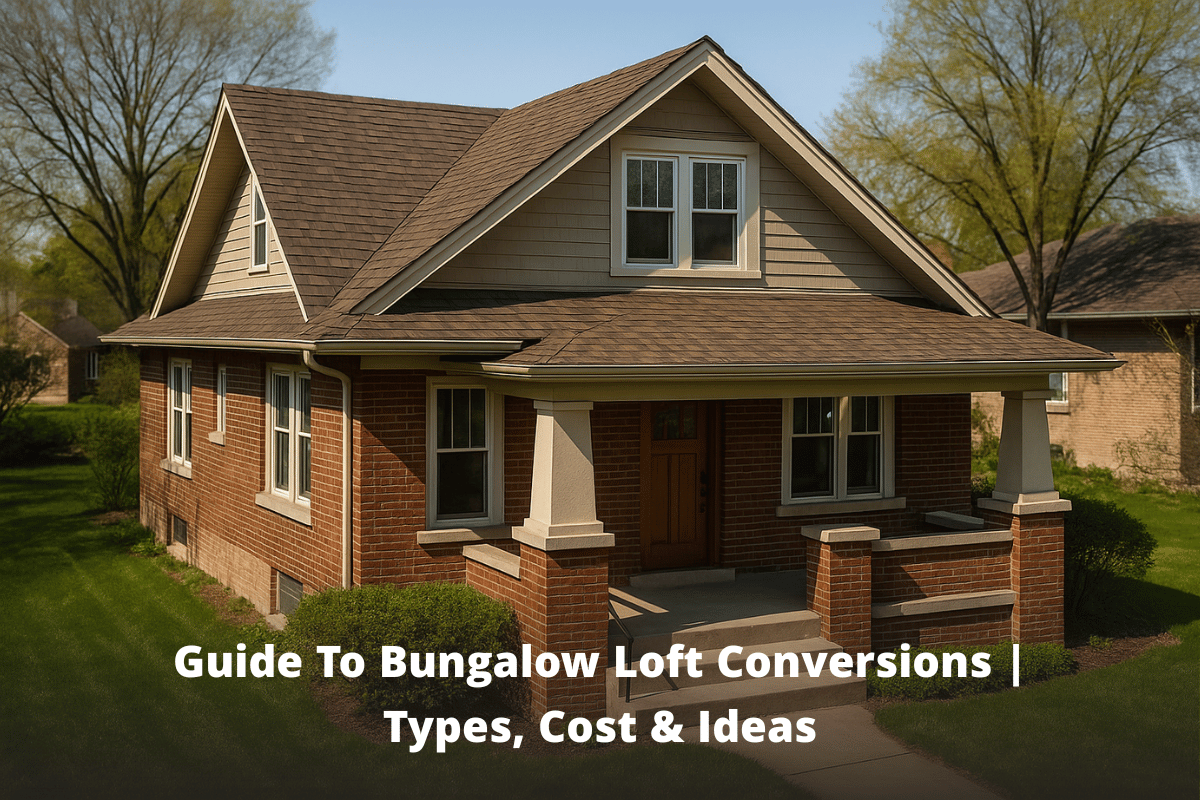
Key Summary
- Mansard conversions provide more space, blend with original architecture but require more time and cost due to complex construction.
- Dormer conversions are less costly, offer varied design choices, and often don’t require planning permission, but may provide less space.
- Both conversions improve thermal efficiency and increase property value, with Mansard possibly offering a larger value increase.
- Choice between Mansard and Dormer depends on individual needs, budget, and property type; professional consultation is recommended.
- If gaining more space is important to you then we recommend a Mansard but you want to add a additional room to your property, then a Dormer would be the better choice.
What is a Mansard Loft Conversion?

A Mansard loft conversion, named after the renowned French architect Francois Mansard, is a popular choice when it comes to optimising home space. Generally, it is the type of loft conversion that offers the most space which is mainly because a key characteristic of the Mansard loft is the creation of maxim space within an existing structure.
Primarily built at the rear of a house, this type of loft conversion involves constructing a steep 70-degree wall angle, topped with a flat roof.
What is a Dormer Loft Conversion?

In contrast to Mansard, a Dormer loft conversion is typically used for homes with high pitched roofs.
This type of loft conversion extends out from the existing roof, creating a box-like structure that considerably increases the headroom and usable floor space within the loft. While most commonly built at the rear of a property, they can also be fitted to the side or front, depending on planning permissions.
What is the difference between a Mansard and a Dormer?
When you’re considering a loft conversion, understanding the key differences between a Dormer and a Mansard conversion becomes crucial to understand which would best suit your needs.
Here are the main differences that may influence your decision:
Cost
Dormer loft conversions are typically less expensive due to a simpler construction process. Mansard conversions require a complete alteration of the roof structure which, generally, would come at a higher cost due to more complex construction and roofing work. On average in the UK, a dormer will cost around £50,000 whilst a Mansard can be as much as £70,000.
Space
Mansard conversions, due to extensive changes to the roof pitch, provide more additional space, emulating a conventional room. On the other hand, Dormer conversions, despite adding valuable extra square footage, might not offer the same expansive, room-like feel of a Mansard conversion.
Aesthetics
Aesthetically, Mansard conversions blend seamlessly with the original architecture, resulting in a more organic look. Dormer conversions, on the other hand, tend to focus more on functionality, which might contrast with the original roofline, but with the right design, can still add significant aesthetic value.
Planning Permission
Dormer conversions often fall under ‘Permitted Development’ in the UK, so if you are looking for a loft conversion without planning permission then this is probably the best choice. Mansard conversions require more significant roof structure modifications, meaning planning permission is usually required. Your loft construction company should be able to further advise on this if you are unsure.
Installation Time
Dormer conversions, with a simpler construction process, usually have a shorter installation time, which is great if you are keen to minimise disruption and get back to a habitable space as soon as possible. Mansard conversions, though requiring more time due to the complex construction process, usually result in more spacious and aesthetically pleasing loft spaces.
Variations and Flexibility
Dormer loft conversions come in a variety of styles such as flat roof, gable fronted, and hipped roof Dormers, offering more design choices. Mansard conversions have a standard design but can be installed on various property types including terraced, semi-detached, and detached houses.
Thermal Efficiency
Both Mansard and Dormer conversions enhance your home’s thermal efficiency. Mansard conversions, with their larger surface area and higher insulation capacity, often provide better thermal efficiency. Dormer conversions, though also improving thermal efficiency, may not offer the same level due to a smaller surface area.
Future Property Value
Mansard and Dormer loft conversions can both significantly increase property value. Mansard conversions, with their larger size and more pleasing design, might yield a higher property value increase but the lower cost of Dormer conversions could provide a higher return on investment upon property sale.
Summary | Key Differences Dormer vs Mansard
| Factor | Mansard Loft Conversion | Dormer Loft Conversion |
|---|---|---|
| Cost | Typically more expensive due to complex construction | Generally less costly |
| Space | Creates more additional space | Provides less additional space |
| Aesthetics | Blends seamlessly with the original architecture | Box-like structure may not blend with existing architecture |
| Planning Permission | Usually required | Often not required if built at the rear |
| Installation Time | Longer due to the complexity of construction | Shorter due to simpler construction process |
| Variations and Flexibility | Standard design; can be installed on various property types | Several styles available; offers more design choices |
| Thermal Efficiency | Greater thermal efficiency due to larger surface area | Improved thermal efficiency, but might not match Mansard’s level |
| Future Property Value | Likely higher property value increase | Lower cost might provide a higher return on investment |
Mansard vs Dormer | Which is Best for Me?
Choosing between a Mansard and Dormer loft conversion largely depends on your personal needs, budget, and the type of property you have. If budget isn’t a constraint and you want a seamless architectural design that offers maximum space, a Mansard loft conversion would be a fitting choice.
On the other hand, if cost is a factor and you live in a property with a high-pitched roof, a Dormer loft conversion can be a practical solution that still provides considerable extra living space.
Other factors such as natural light, ventilation, and insulation requirements will also play a role in your decision. It’s worth remembering that both types of loft conversion can be fitted with large windows to increase natural light and ventilation.
Conclusion
In the debate of mansard vs dormer loft conversion, the best choice is contingent on your individual circumstances and needs. Whether you prefer the substantial space and seamless design of a Mansard or the cost-effectiveness and practicality of a Dormer, ensure you weigh all factors carefully.
Remember to consult with a professional architect or loft conversion specialist such as London Lofts before embarking on your loft conversion project. Their expertise and knowledge will be invaluable in navigating planning permissions and delivering a loft conversion that truly transforms your living space.




